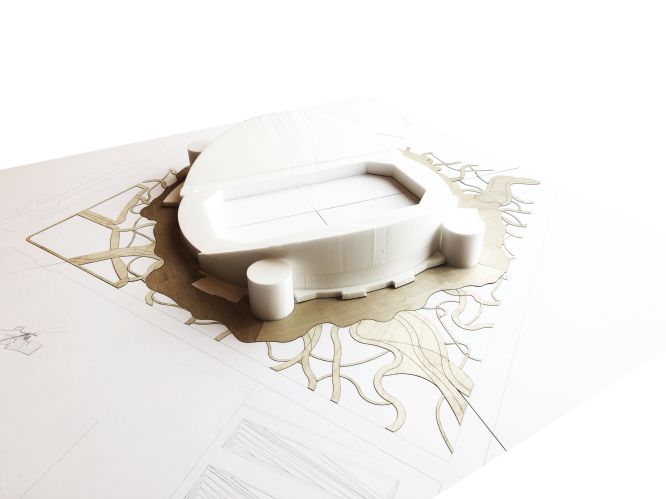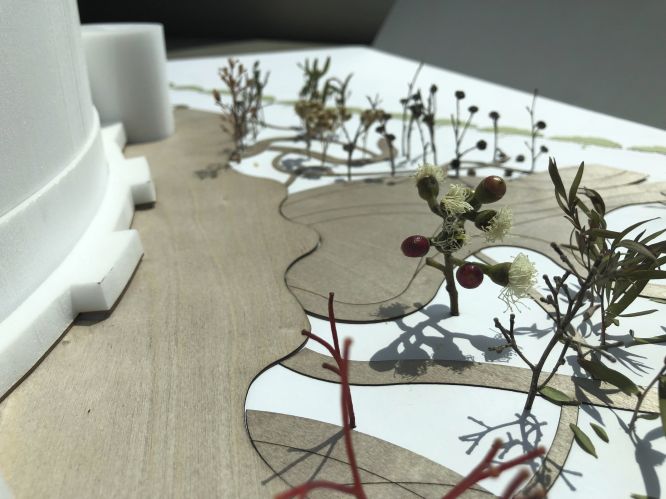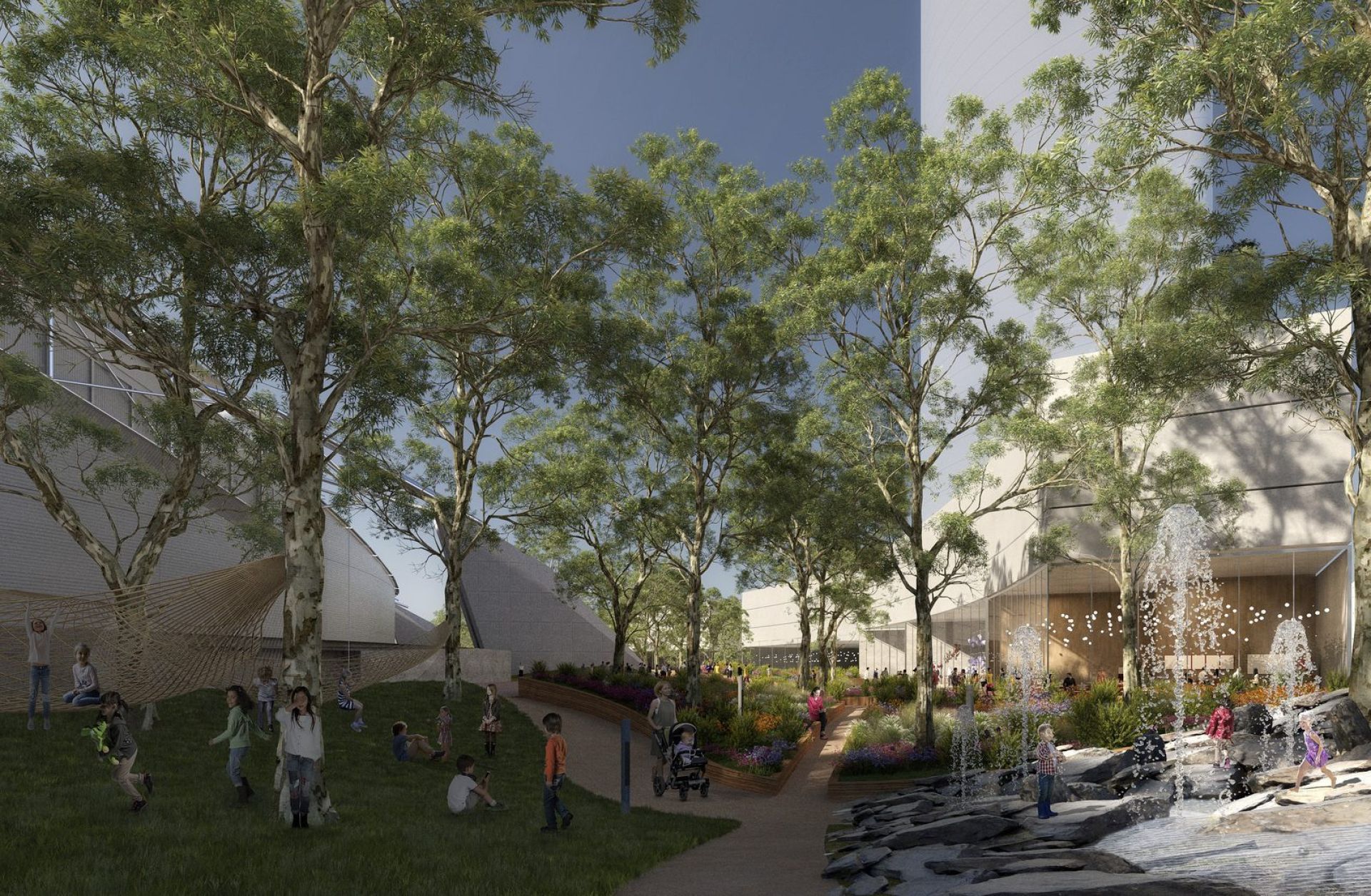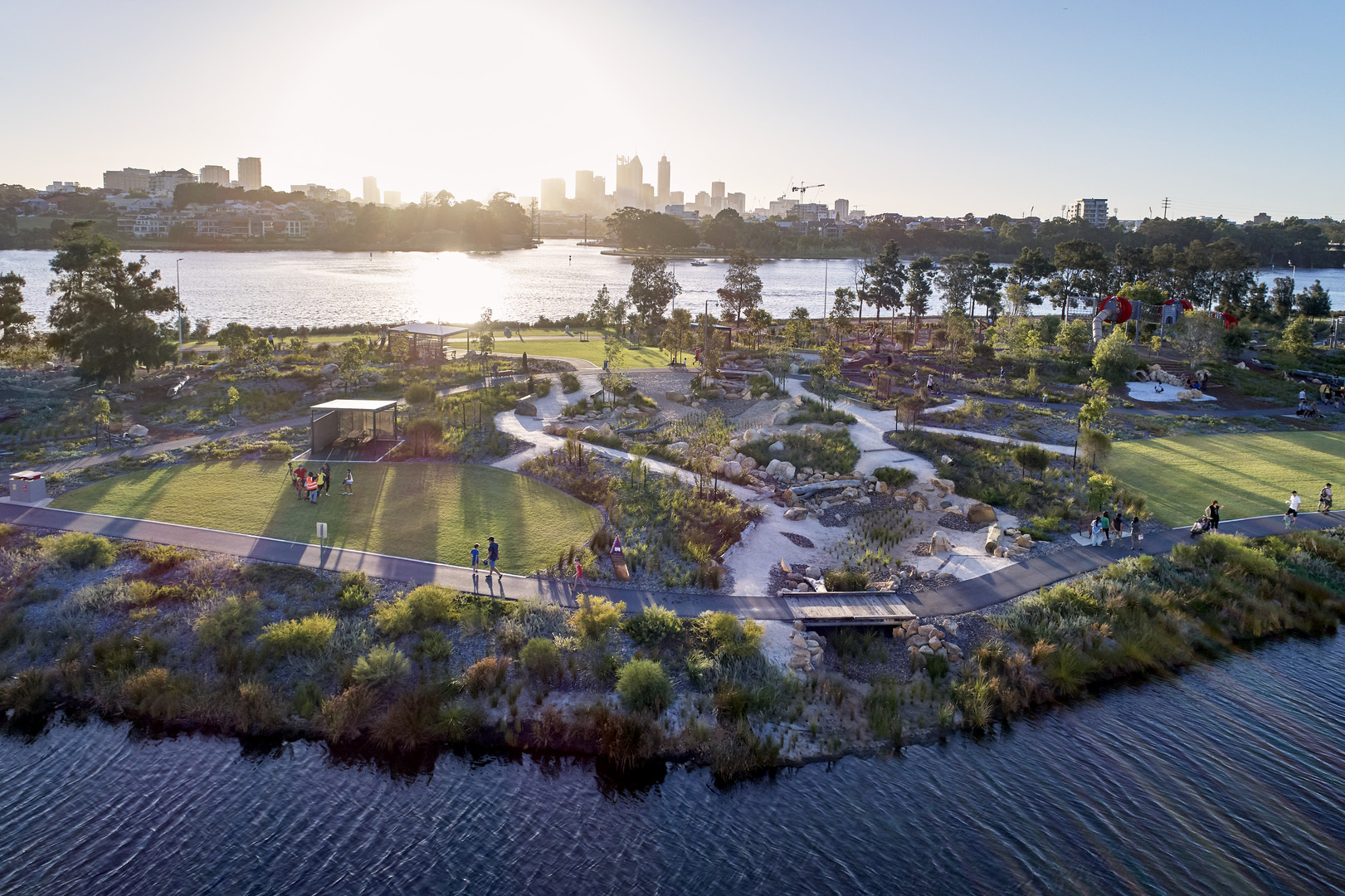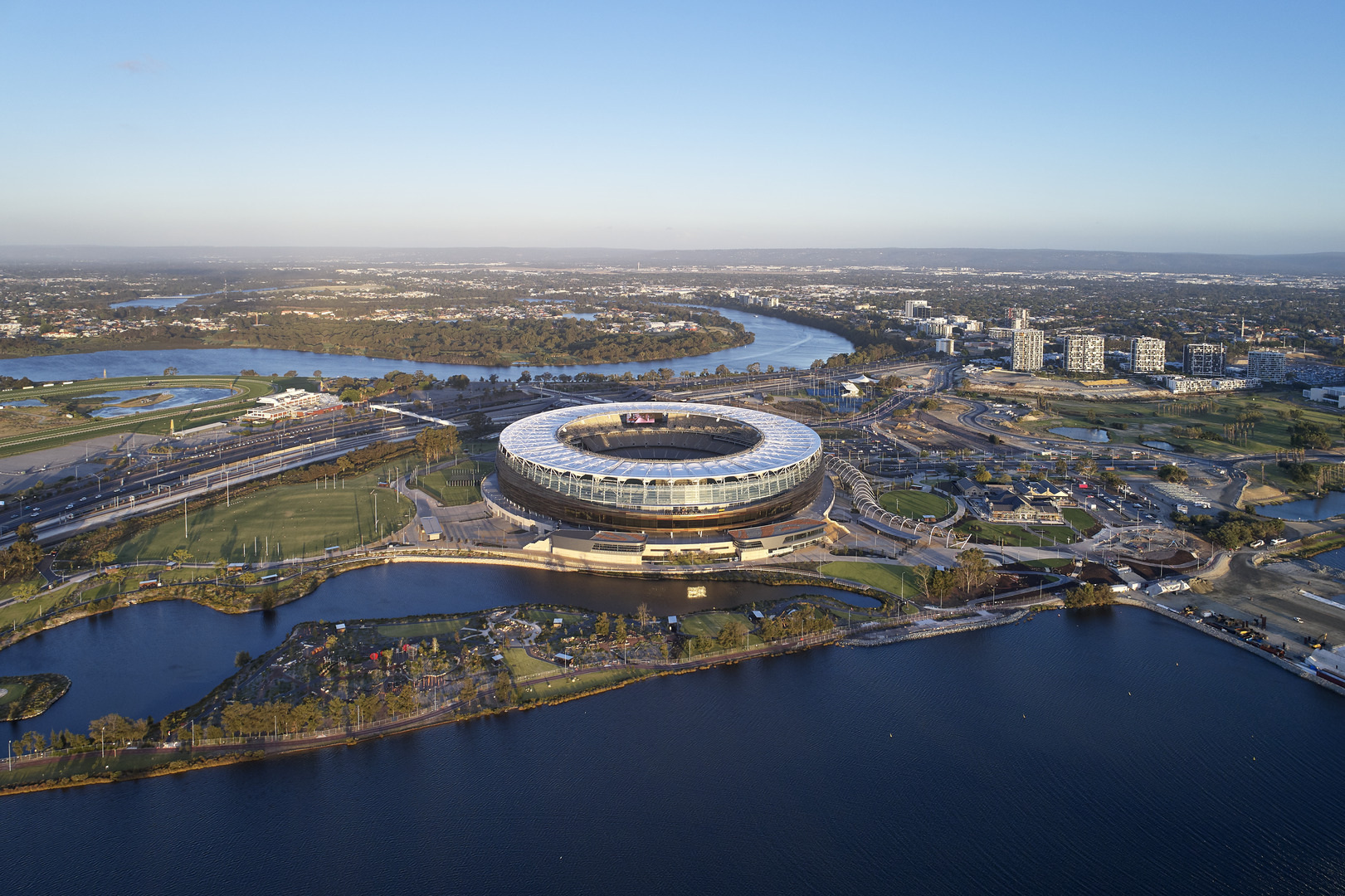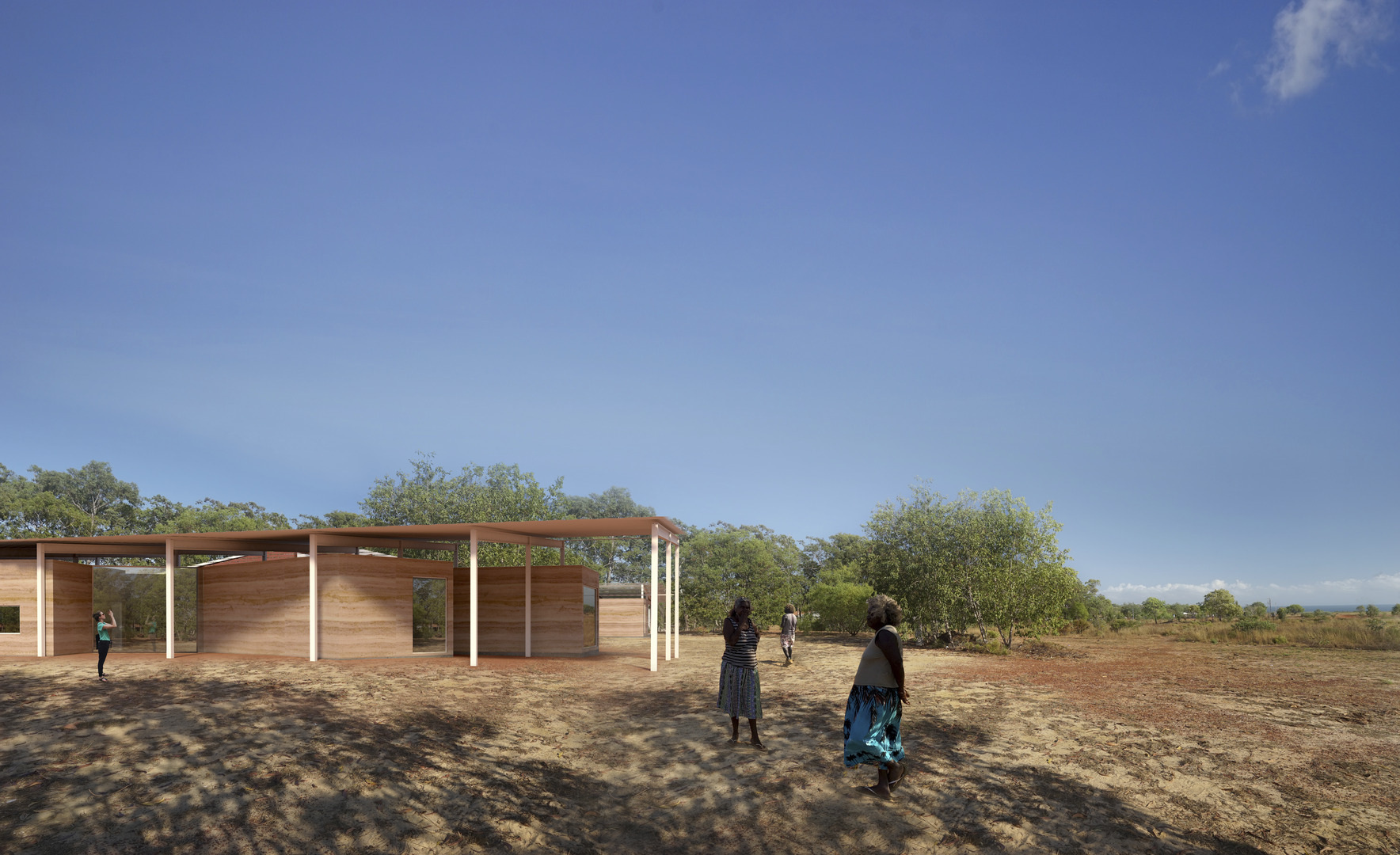Sustainability highlights
Grounded in Indigenous knowledge, our sustainability vision for the Stadia Precinct is about caring for Country from a place of humility, reverence and connection, continuing a 60,000 year-old legacy of environmental stewardship.
- The precinct gardens and tree canopy provide movement and seasonality as well as habitat, shade, and heat island effect reduction
- Proposals to recycle 100% of existing materials on-site, including retention of the original Olympics paving, with excess re-used for landscape structures like garden mounds, drainage layers and rammed earth walls
- Smart water management that captures and reuses 95% of the site’s rainwater, with garden beds providing passive treatment and irrigation
- Improved pedestrian and cycling access, with clear and legible routes and connections to public transport and adjacent sites
- Significant planting improves air quality and storm water runoff in the environment
- Use of ‘green’ concrete, made of recycled aggregate and water with at least 65% reduction in Portland cement, with embodied carbon offset by planting
Highlights
Inspired by the site’s history, our design approach adapts and retains existing elements – recycling the millennium ‘red zone’ paving and refreshing the lighting towers with climbing plants. New garden areas dedicated to Olympic Bouquet plants also repurpose existing artwork commemorating the Games.
The planting is an art form that comprises part of the Aboriginal interpretation of the site. A naturalistic style, that’s native and ever-changing, showcases textures and an emotional connection to the land. Edible, foraging gardens would be maintained by Yerrabingin and used for education.
Virtual Songlines would create virtual heritage experiences to immerse visitors in the pre-colonial landscape. There’s also a café and restaurants in a garden setting, and playgrounds co-designed with children in workshops.
Design process
Yerrabingin, which employs young Aboriginal horticulturalists, led a deeply collaborative design process through ‘design jams’ with community members, stakeholders and developers.
The team included artists, ecologists, architects, designers and game designers, supported by Hassell. Rather than a final design, we presented a framework that would include wider voices to the design process.
We also collaborated with Virtual Songlines, an Aboriginal-owned company that maps the pre-colonial condition of Australian sites through GIS and various sources and uses gaming software to transform these visualisations into an immersive, three-dimensional experience. Virtual Songlines recreated the pre-colonial landscape of the stadium surrounds to the nearest water body, Haslem’s Creek.
Ultimately, the project was designed to support ongoing education and employment. The framework considered whether it could fund an on-site nursery, employ full time gardeners, run cultural education programs for young people and attract volunteers. Aboriginal-owned businesses were considered throughout the construction process, from making rammed earth walls and seed sourcing to furniture making.


